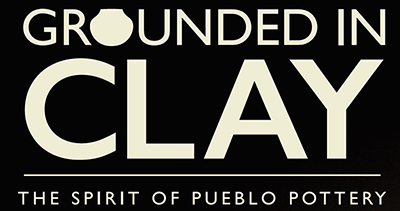Bernard Mora
Tesuque Pueblo
Curator Bernard Mora (Tesuque Pueblo) is a potter, father, grandfather, United States Marine Corps veteran, and fluent Tewa speaker.
Bernard chose the following for the Grounded in Clay exhibit:
Puki: A Pottery-Making Base
I chose this puki because of the way it is preserved: mud is still embedded in the base, layers of clay from consistent use are visible, and its surface is hardened from the pressure it bore every time a new vessel began its journey on the puki.
Loosely translated, a puki, in American archaeological terms, is a coiling base. After harvesting and mixing all the clay and paints, and after prayer and preparation, a potter may require the assistance of a puki to build a jar. With a puki of this design, the base of a clay pot is created by molding the starting coils to either side of the tool. This reflects the most popular and practical use of a puki, and is probably how this particular one was employed. Before the introduction of the clay puki, woven yucca baskets were sometimes used for the same purpose, but these are seldom found by archaeologists because the organic material does not preserve well. Between the fourteenth and sixteenth centuries, Indigenous communities began to build permanent dwellings in fertile places. A more sedentary lifestyle allowed much heavier and sturdier materials to be used. Clay was abundant, rivers and channels throughout the region provided access to water, and the mountain ranges meant that raw firing materials such as cedar, piñon, and juniper wood were also readily available.
The disk-shaped puki has a shallow curve and is stable sitting “right side up” and “upside down.” Both sides of the puki can be used, although its traditionally identified “bottom” is worn enough to indicate there was probably a dominant surface. The “top” of the puki has a dome-shaped bulb to assist in giving vessels a concave base. The “bottom” has a hollow that assists in creating a round-bottomed vessel.
American archaeologists often overlook the practicality of a tool such as the puki. It is a versatile utensil, one that can be used for many other purposes, including for carrying water, as a plate for food, or even for cooking. It can also be used as a paint palette for pottery, or as a mortar for grinding and mixing herbs for medicinal purposes. Once a pot is fully built, the puki can be used to stabilize and dry the vessel. Light in weight, the puki is easily transportable, and was probably used in even more inventive ways. Creation begins with an idea.
Pottery is the tangible stage of bringing objects to life. To have a life is to have a purpose. The puki has made itself useful in many ways, and continues to stand the test of time.

